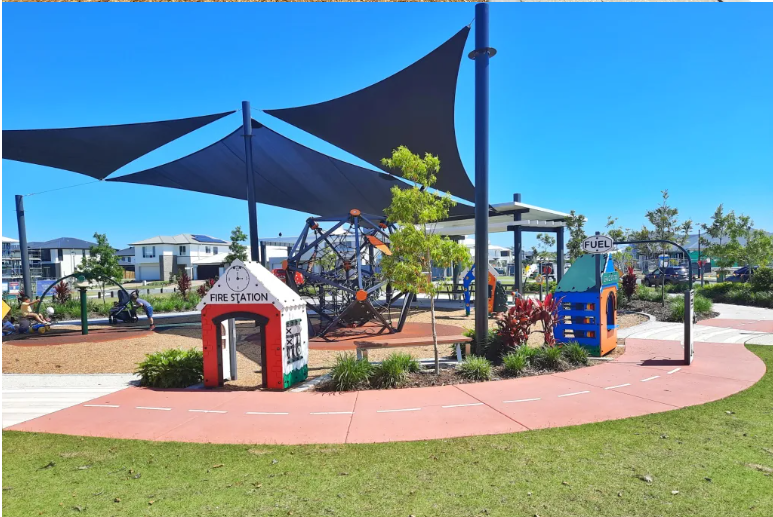We all know that the sky is blue, but many of us take this fact for granted. Have you ever wondered why the sky is blue? Well, you’re not alone! It’s a question that lots of children and adults have (and one that has left many a parent stumped…).
In this blog, we take a close look at one of the most fascinating and beautiful natural phenomena – the blue sky. Think of it as a cheat sheet for when your little one starts asking what is a difficult and somewhat scientific question! From the science behind its colour to the different ways it can change, we’ll explore the many mysteries of the sky and how it has captivated people for centuries. So why is the sky blue? How does it change colour? And is the sky the same colour everywhere in the world? Let’s find out!
Little Scholars provides an attractive and safe environment to children in South East Queensland while giving you total peace of mind while your children are in our care. Learning areas include well-equipped playrooms and landscaped outdoor spaces for maximum learning opportunities. Book a tour today if you are looking for a childcare centre in South East Queensland.
The sky is blue because of something called Rayleigh scattering
Have you ever heard of something called “Rayleigh scattering”? It’s a fancy scientific word, but it’s actually a really cool phenomenon that helps explain why the sky is blue!
Rayleigh scattering is a type of light scattering that happens when light waves hit very small particles, like the tiny particles in the Earth’s atmosphere. The Earth’s atmosphere is made up of different things, like water vapour and tiny dust particles and pollen. When sunlight hits these particles, the light is scattered, or spread out, in all directions.
What is a particle? Well, a particle is just a really, really small piece of something, like air, dust, or water. When light waves hit these particles, they can bounce off in different directions. This is called “scattering” – think of rolling a marble into a group of other marbles. They all bounce off of each other and go every which way.
Did you know that this is also similar to how blue eyes get their colour? That’s right, blue eyes don’t have any blue colour in them at all. Instead, they get their colour from the way they reflect light. Just like the sky and the ocean look blue because they reflect blue light!
So, as you can see, Rayleigh scattering is a really cool scientific phenomenon that helps explain why the sky is blue and why our eyes are blue. It’s just one of the many fascinating things about light and the world around us.
But why isn’t the sky a different colour?
But the sky isn’t always blue! Sometimes, it can be other colours, like orange, pink, or red. This can happen at sunrise or sunset, or just when the sun is low in the sky. Depending on where the sun is in the sky its light might have to travel through more of the Earth’s atmosphere to get to us, which means it has more time to be scattered. This can make the sky look orange, pink, or red. Have you ever seen a beautiful sunrise or sunset? Those colours in the sky are caused by the same process that makes the sky blue.
The sky can also change colour because of things like clouds, pollution, and even the weather. Clouds can block the sunlight, making the sky look grey or white. Pollution can also make the sky look hazy or yellow. And different types of weather, like thunderstorms or dust storms, can change the colour of the sky too.
The sky used to be orange a long time ago
According to an article by National Geographic Kids, the sky was actually orange until about 2.5 billion years ago. This is because the Earth’s atmosphere was very different back then, and it was filled with a lot of methane and other gases that made the sky look orange.
But about 2.5 billion years ago, something called the “Great Oxygenation Event” happened. This was when the Earth’s atmosphere started to fill up with oxygen, which is a gas that most animals need to breathe. The oxygen in the atmosphere caused methane and other gases to disappear, and this made the sky start to look blue like it does today.
The sky also looks different in different parts of the world
- The latitude (how far north or south you are) and altitude (how high above sea level you are). This is because the angle at which the sun’s rays hit the earth’s atmosphere can change the way the sky looks. For example, at higher latitudes, the sun appears lower in the sky and its rays hit the atmosphere at a sharper angle, which can cause the sky to appear more red, orange, or yellow at sunrise and sunset. At higher altitudes, the air is thinner, which can also affect the way the sky appears.
- The amount of moisture and particles in the air: The presence of water vapour and other particles in the air can scatter light differently, which can change the way the sky looks. For example, if there is a lot of moisture in the air, the sky might appear more hazy or cloudy. If there are a lot of particles in the air, such as dust or pollution, the sky might appear more muted or hazy.
One interesting example to look at is the Northern Lights, also known as the Aurora Borealis. The Northern Lights are a beautiful light show that can be seen in the sky in the Northern Hemisphere, near the North Pole. They are caused by charged particles from the sun that enter the Earth’s atmosphere and collide with gases like oxygen and nitrogen. These collisions create colourful light displays in the sky. The Northern Lights can be different colours, like green, red, yellow, and even purple.
You can also see something similar right here in Australia! These are called the Southern Lights, or Aurora Australis, which can be seen in the sky near the South Pole in places like Tasmania. Just like the Northern Lights, the Southern Lights are caused by charged particles from the sun colliding with the Earth’s atmosphere.
So, as you can see, the sky can be different colours in different parts of the world because of the different gases and particles in the Earth’s atmosphere. But no matter where you are, the sky is always an amazing and beautiful thing to look at.
Contact Little Scholars for all your childcare needs
At Little Scholars, located on the Gold Coast, we prioritise creating a warm and welcoming environment for children to grow and thrive. Since opening in 2014, we have offered educational programs and activities in a fun and nurturing atmosphere, including access to a spacious outdoor play area.
Our early learning campuses are designed to be both attractive and safe, with well-equipped playrooms and landscaped outdoor areas that provide ample opportunities for learning and exploration. We aim to give parents peace of mind while their children are in our care. Book a tour today to find out more.



